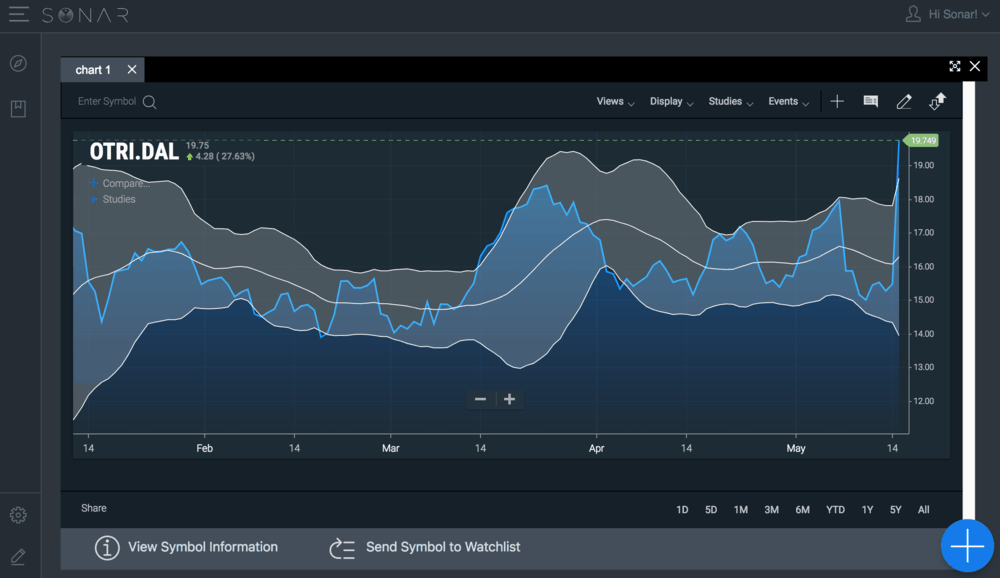
Today during Transparency18’s demo day in Atlanta, Michael Vincent, EVP at FreightWaves, announced the beta launch of Sonar, the company’s SaaS data platform. Sonar is a subscription-based service providing near-time market data for the transportation and logistics industries in the United States.
“We have the distinct pleasure of introducing the very first freight market dashboard,” Vincent began. “Sonar gathers a unique data set, never before seen, to help operators make better decisions.”
“Sonar is not a pricing tool,” clarified Vincent. “There are plenty of excellent pricing tools already out there. Sonar is about gaining access to market data and predictive analytics to see where prices are moving and help companies make business decisions.”
Vincent showed how the ELD mandate affected the rate of rejected loads outbound from Chicago in December 2017, and how the market slowly normalized as carriers figured out how to manage their assets. A second example mapped daily truck capacity in the Los Angeles market by overlaying diesel fuel consumption and outbound turndowns.
Sonar users can display information in the form of a heat map or a chart. Current indices fall in three categories: fuel indices, used truck prices, and trucking activity indices. Fuel indices include the weekly DOE diesel price per gallon, tracked nationally, and daily diesel truck stop actual price per gallon, tracked by XMA. Sonar tracks and displays the monthly national average prices for three, four, and five year-old trucks.
The trucking activity indices represent the core of Sonar, and include proprietary metrics built by the FreightWaves data science team. If you’ve been reading FreightWaves, you’ve probably come across references to the TRI, or Tender Rejection Index. Zach Strickland, for example, wrote an article about the Atlanta market in March that uses the TRI. The TRI is the ratio of rejected tendered loads over total loads tendered, outbound or inbound, tracked daily by XMA. Because the TRI tracks the behavior of carriers (who reject the loads), it measures carriers’ attitudes toward market volatility and is predictive of spot rates.
The image at the top of this article is a screenshot from Sonar displaying the OTRI (outbound TRI) for the Dallas market, with Bollinger bands applied. Bollinger bands are one of many studies built into Sonar that can be applied to data: this study in particular displays the moving average and standard deviations for a given index. In addition to daily inbound and outbound turndowns for each XMA, Sonar displays national figures for short haul, mid haul, and long haul turndowns.
National heat maps displaying turndowns and tender lead times can be generated to help companies quickly identify which XMAs have an excess or a lack of capacity.
Other truck activity indices include tender lead time (TLT), Broughton barometers for dry van, reefer, and flatbed, and various CASS freight indices. The FreightWaves data science team created the TLT index as a way to measure shippers’ attitudes toward market volatility. The TLT is aggregated daily by XMA and is measured in days, tracking the duration between when a load is tendered by a shipper and when the shipper wants the load picked up.
Finally, there are indexes like commodity flows on an XMA level, so that a Sonar user can quickly see net flows of coal, sand, meat, lumber, gravel, etc. Container box prices from China and Europe to the West and East Coasts of the United States can also be charted on a weekly basis so that shippers and transportation providers can get a sense of maritime supply and demand.
Stay up-to-date with the latest commentary and insights on FreightTech and the impact to the markets by subscribing.










